

10 of the Best Edgar Allan Poe Stories Everyone Should Read
By Dr Oliver Tearle (Loughborough University)
Compiling a list of the best Edgar Allan Poe short stories is always going to prove controversial, because he wrote many more classics than a ‘top 10’ list could ever dream of comprehensively capturing.
So the following does involve some omissions – ‘The Pit and the Pendulum’, and several other well-known tales – because our list is designed to showcase the sheer variety of Poe’s stories, and the various genres which he helped to develop (Gothic horror, ghost story, science fiction, detective story).
Do leave your suggestions for the best Poe stories in the comments below (and tell us how you’d change our selection here!).
10. ‘ The Balloon-Hoax ‘.
Published in 1844 and originally presented as a true story in The Sun newspaper in New York, ‘The Balloon-Hoax’ tells of a European man’s journey across the Atlantic in a hot-air balloon.
The journey supposedly took him only three days – which would have been a remarkable feat, if true. It wasn’t. The hoax was exposed, and the newspaper retracted the story.
9. ‘ The Premature Burial ‘.
The name for a fear of being buried alive is taphephobia, and Poe wrote perhaps the definitive story about this fear, a fear which also turns up in ‘The Fall of the House of Usher’. The story taps into a nineteenth-century fear which was widespread, and prefigures the work of the psychoanalyst Sigmund Freud, who identified a fear of being buried alive by mistake as one of the hallmarks of the uncanny .
8. ‘ Hop-Frog ‘.
Originally bearing the subtitle ‘The Eight Chained Ourangoutangs’ , this story is a revenge tale. A dwarf who is serving as a tyrannical king’s jester swears revenge on the king and his court after the king strikes the dwarf’s companion, the female dwarf Trippetta.
The revenge entails the dwarf disguising the king and his courtiers as orangutans (hence the story’s subtitle) and … well, to say more than this would be to offer spoilers.
7. ‘ The Gold-Bug ‘.
This is, in many ways, the first code-breaking story. As we’ve outlined elsewhere , Poe was a keen cryptographer who invited readers of Alexander’s Weekly to submit puzzles and cryptograms for him to solve. He solved every one.
This story centres on a search for buried treasure, with the deciphering of a code providing the key to the treasure’s whereabouts. This was arguably Poe’s most successful tale during his lifetime and, according to the author himself , sold more than 300,000 copies within its first couple of years.
6. ‘ The Tell-Tale Heart ‘.
A story centring on the aftermath of a murder, ‘The Tell-Tale Heart’ is a short Gothic classic which contains echoes of Macbeth and would go on to influence later writers, notably Robert Louis Stevenson in his story ‘Markheim’. It is one of Poe’s shortest classic short stories, and is noteworthy for providing a different, altogether more modern take on the ghost story, because there is some uncertainty as to whether we are in the realm of hallucination or the supernatural.
For our money, it’s one of Poe’s most perfect stories – though its ‘story’ is remarkably straightforward, and it’s more about psychological effects than it is about plot.
5. ‘ William Wilson ‘.
A fine tale of the double whose influence can be seen everywhere from Dr Jekyll and Mr Hyde to Fight Club , ‘William Wilson’ is narrated by a man whose mysterious double – also called William Wilson – appears at the moments in his life when the narrator behaves in a less than moral way (cheating at cards, for instance).
The final scene of the story surely influenced Oscar Wilde’s ending to The Picture of Dorian Gray . We’ve analysed ‘William Wilson’ here .
4. ‘ The Purloined Letter ‘.
This is one of the first ever detective stories and, like ‘The Murders in the Rue Morgue’, features the literary inspiration for Sherlock Holmes , C. Auguste Dupin.
This story centres on an indiscreet love letter , which has been stolen in order to be used for blackmailing purposes. It is a theme that countless later writers of detective fiction, notably Conan Doyle, would utilise and adapt .
The police cannot find the letter in the blackmailer’s apartment, although they know it must be there somewhere – so Dupin, the independent detective, is consulted. He manages to see what the police failed to see – but to say more than that would be to reveal too much …
3. ‘ The Black Cat ‘.
A terrifying tale narrated by a man who drunkenly maims his pet black cat by gauging out one of its eyes (!). If that isn’t horrific enough, the narrator, a violent alcoholic, then hangs the cat from a tree in his garden. Thereafter, he will be ‘haunted’ by the cat – and his life is about the get much, much worse.
Like ‘The Tell-Tale Heart’, this is a story about guilt and remorse, and an interesting and ambiguous take on the ghost story.
2. ‘ The Murders in the Rue Morgue ‘.
One of the first modern detective stories, this – and ‘The Purloined Letter’ – clearly influenced Conan Doyle in his creation of Sherlock Holmes (who, in the first novel in which he appears, refers to Poe’s fictional detective, C. Auguste Dupin, as a ‘very inferior fellow’).
We won’t offer spoilers here as to the story’s surprising resolution, but suffice to say that ‘The Murders in the Rue Morgue’ went a long way towards creating the locked-room mystery genre of detective stories. Although it’s often called the first detective story, there are a number of other candidates for this honour, as we revealed in our short history of detective fiction .
1. ‘ The Fall of the House of Usher ‘.
Another story which, like ‘The Tell-Tale Heart’, might be called a Gothic novel in miniature, ‘The Fall of the House of Usher’ is regularly named one of Poe’s best stories. The story combines the Gothic house, the old aristocratic family on its last legs, the idea of the dead returning to life, and various other hallmarks of classic Gothic fiction . Go and have your spine chilled with this classic tale.
26 thoughts on “10 of the Best Edgar Allan Poe Stories Everyone Should Read”
Nice Haloween blog!
- Pingback: Five Fascinating Facts about Edgar Allan Poe | Interesting Literature
- Pingback: October 7 in Literature: Edgar Allan Poe Dies | Interesting Literature
- Pingback: October 3 in Literature: Edgar Allan Poe Found Delirious on Streets of Baltimore | Interesting Literature
- Pingback: Edgar Allan Poe: Poet and Prophet | Interesting Literature
- Pingback: 10 Classic Victorian Novels Everyone Should Read | Interesting Literature
- Pingback: Origins of Gothic Literature | Interesting Literature
- Pingback: The First Gothic Novel | Interesting Literature
Reblogged this on newauthoronline and commented: Sadly my braille edition of Poe’s “Tales Of Mystery And Imagination” (which runs to 9 volumes) is missing several of them. It being a collection of stories, this is not the end of the world and the book still resides on the bookcase in my bedroom. Kevin
How can you pick them? They’re all so wonderful! I’m particularly fond of Berenice.
Oh yes, ‘Berenice’ is wonderful!
Thanks for the love links! I can’t wait to read/reread some of these :-)
Wow. I guess I wanted to write “love the links” and thanks for the links,” and got confused.
Ok, as a HUGE Poe fan I can’t help myself but write my own list:
1. William Wilson 2. The Oval Portrait 3. The Tell-tale Heart 4. The Black Cat 5. The Assignation 6. The Fall of the House of the Usher 7. The Cask of Amontillado 8. Ligeia 9. The Masque of the Red Death 10. Metzengerstein
It’s really hard to choose just 10!!
I don’t have time right when I do, I’m going to follow all those links you so generously provided.
I have read them. Excellent. My favourite is the ‘The Black Cat’. It’s horrible but the end is very satisfying.
Surely ‘The Pit and the Pendulum’ deserves a mention of its own, even if it does appear in a collection. I read it as a teenager and never forgot it ( over fifty years ago)
Poe is fascinating, both as a person and as a writer. The Cask of Amontillado is one crazy tale of paranoia.
His Raven is a brilliant poetic expression of rhythm and sound effects apart from its narrative. I’ve an analysis of the poem on my blog if I remember correctly!
- Pingback: Ten Facts about Sherlock Holmes | Interesting Literature
- Pingback: Le Fanu and the Weird Turn of the Ghost Story | Interesting Literature
Rather pleased (and a touch smug) to say I’ve read most, if not all, of these stories. I love our Mr Poe!
- Pingback: 10 Classic Victorian Ghost Stories Everyone Should Read | Interesting Literature
- Pingback: October 31 in Literary History: John Keats Born | Interesting Literature
- Pingback: November 9 in Literary History: Stieg Larsson Dies | Interesting Literature
Comments are closed.
Discover more from Interesting Literature
Subscribe now to keep reading and get access to the full archive.
Type your email…
Continue reading

Ranking The 10 Best Edgar Allan Poe Stories
Grace Lapointe
Grace Lapointe’s fiction has been published in Kaleidoscope, Deaf Poets Society, Mobius: The Journal of Social Change, and is forthcoming in Corporeal Lit Mag. Her essays and poetry have been published in Wordgathering. Her stories and essays—including ones that she wrote as a college student—have been taught in college courses and cited in books and dissertations. More of her work is at https://gracelapointe.wordpress.com, Medium, and Ao3.
View All posts by Grace Lapointe
Poe’s stories convey in a few pages what some writers take hundreds of pages to tell. They contain wordplay and symbolism but also anticipate more realistic writers like Fyodor Dostoevsky. Before the formal field of psychology existed, Poe’s stories explored guilt, paranoia, delusions, and obsessions. Poe helped create the overlapping moods and genres of horror, mystery, historical fiction, slipstream, and science fiction and fantasy as we know them today.
Known mainly as a literary critic in his lifetime, Poe worked for several literary journals. Unlike many other 19 th century writers, Poe thought that fiction should never be didactic or moralizing. His theory and fiction helped define the short story as a form.
You can buy Poe’s Short Stories at bookstores, and most are available to read for free online at Project Gutenberg and other sites.
Sources disagree on how many works of fiction Poe wrote, although most estimate it was at least 70 or 80. For January 19, 2022, the 213 th anniversary of his birth, here is a ranking of ten of his best stories.
The Top 10 Poe Stories, Ranked
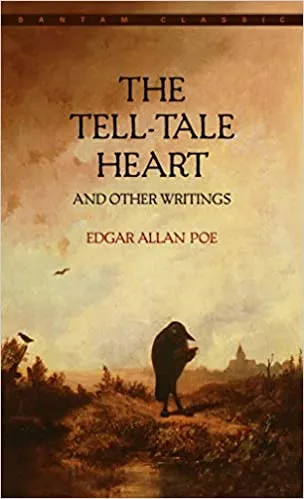
1. “The Tell-Tale Heart”
One of his shortest stories, this is the quintessential Poe story in many ways. It concisely showcases his recurring elements of guilt, paranoia, murder, and unnamed narrators rationalizing their actions. The murdered man’s heart beating through the floorboards is one of Poe’s creepiest, most iconic images, blurring the line between psychological and supernatural horror.
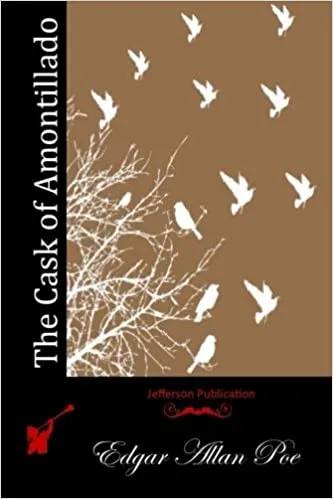
2. “The Cask of Amontillado”
The protagonist, Montressor, lures his acquaintance, Fortunato, into a wine cellar that’s actually a crypt. He then walls him up and leaves him inside to die. Montressor is one of Poe’s most terrifying and unreliable narrators. We never even learn “the thousand injuries” or final “insult” that Fortunato committed against Montressor in the first place. Poe’s grim sense of humor is underrated, but his characters often have ironic names. Fortunato means fortunate in Italian.
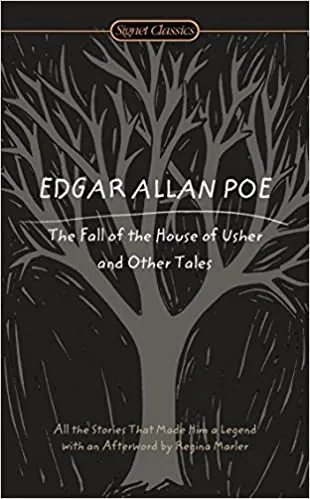
3. “The Fall of the House of Usher”
Dr. Oliver Tearle described this story as a gothic novel condensed into a short story. It contains many hallmarks of gothic literature from before and after Poe: decay, aristocracy, and an old house with family secrets, including incest. Guillermo del Toro’s horror film Crimson Peak and Silvia Moreno-Garcia’s novel Mexican Gothic are excellent recent takes on gothic fiction that share some key elements with this story.
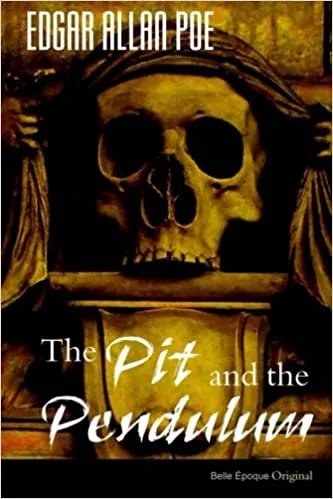
4. “The Pit and the Pendulum”
This story makes its suspense and danger seem immediate to both the narrator and readers. During the Inquisition in Europe centuries earlier, the unnamed narrator is trapped in a cell between two equally perilous forms of torture: the pit and the scythe-like, swinging pendulum blade. Its nightmarish imagery takes old cliches like being stuck in a crucible, or between a rock and a hard place, and realizes them, both literally and metaphorically.
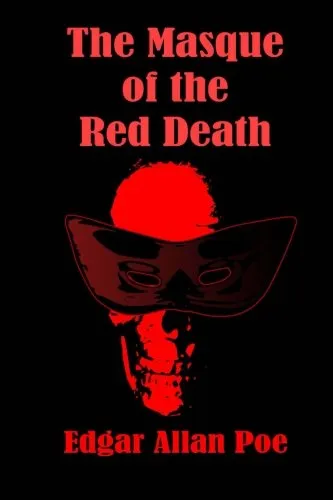
5. The Masque of the Red Death
During a highly contagious epidemic, the Red Death, callous, creative Prince Prospero and his friends throw a lavish masquerade ball. They seem oblivious to the danger and their own privilege — and then the Red Death personified shows up. Today, people either return to this story or find it too on-the-nose during the COVID-19 pandemic.
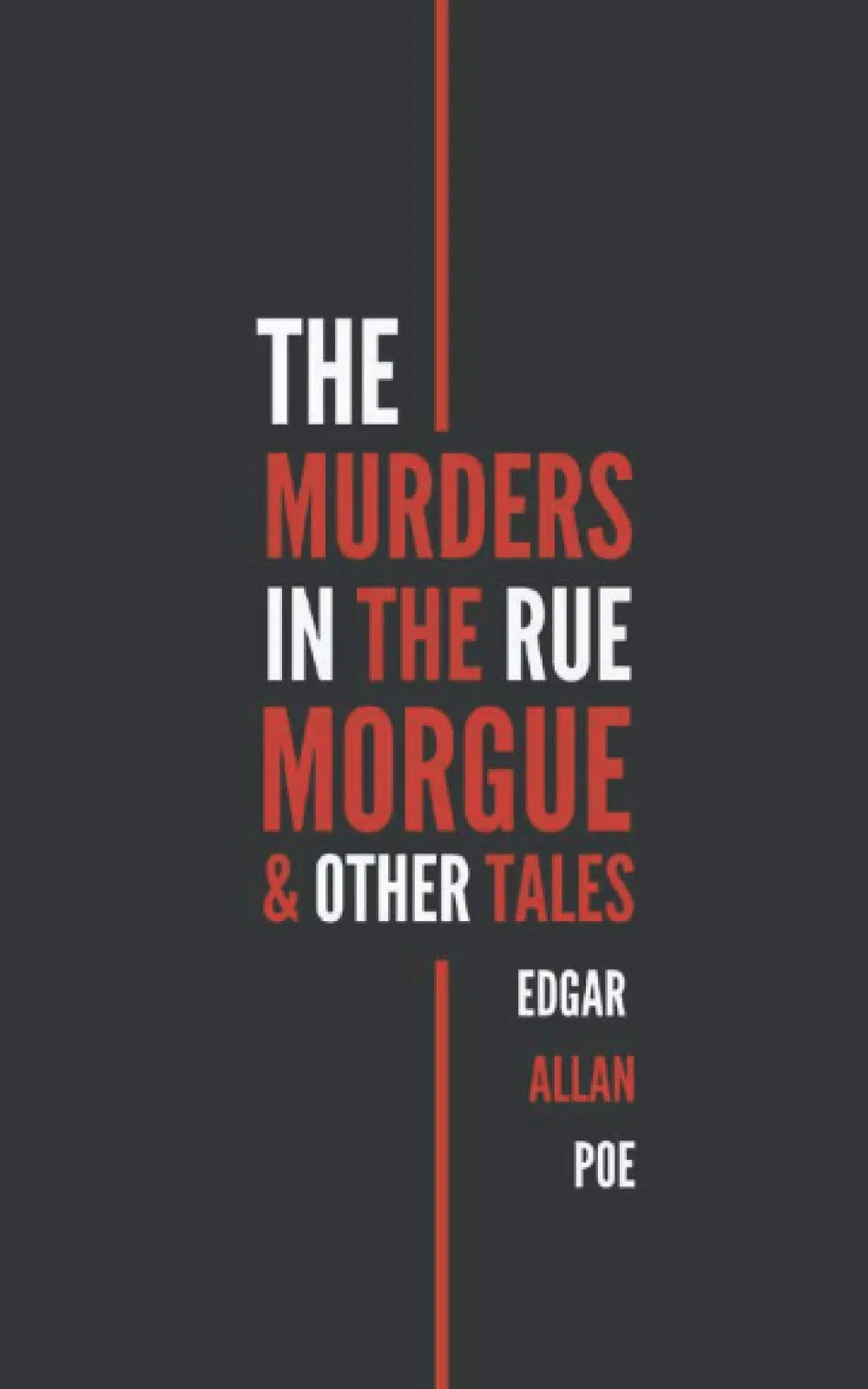
6. “The Murders in the Rue Morgue”
There’s debate as to whether Poe’s character Auguste Dupin was the first fictional detective . While Poe may not have coined the word “detective,” he influenced the entire mystery genre, including Sir Arthur Conan Doyle’s Sherlock Holmes . Dupin later appeared in two more Poe stories: “The Mystery of Marie Rogêt” and “The Purloined Letter.” With Dupin, Poe established many conventions of detective stories. These include a private investigator, independent from the police department, who uses logical reasoning to solve crimes.

7. The Oval Portrait
A painter draws his wife’s life force into a portrait of her, killing her. This eerie story plays on ancient myths of mirrors and paintings capturing the subjects’ souls. Some critics consider this story a possible influence on Oscar Wilde’s Victorian novel The Picture of Dorian Gray .
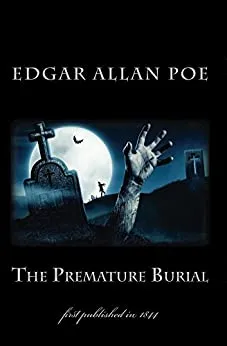
8. “The Premature Burial”
The narrator has a phobia of being buried alive, and he describes supposedly true examples of this phenomenon. In the early 1800s, this would have been a reasonable fear, as it was theoretically possible and occasionally happened. Poe used different takes on live burial in other stories, including “The Fall of the House of Usher” and “The Cask of Amontillado.”
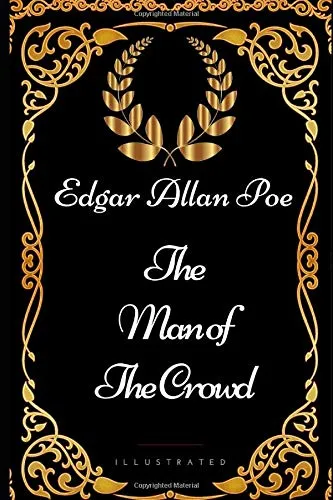
9. “The Man of the Crowd”
An anonymous observer in a crowd becomes fascinated with a stranger and follows him. This short story is often taught alongside poet Charles Baudelaire’s description of a flâneur or idler. As always, Poe’s ability to create suspense and his knowledge of history, Greek, and French make the story memorable. Both Poe and Baudelaire described writers as avid observers of life.
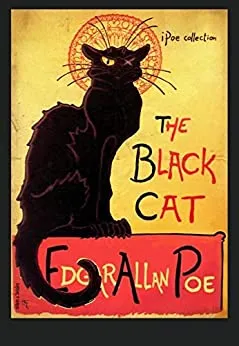
10. “The Black Cat”
Often paired with “The Tell-Tale Heart,” this story features another unnamed, unreliable, and violent narrator. He escalates from animal abuse to murder and is literally and figuratively haunted by his actions. As usual with Poe, the ambiguity makes it even creepier. We’re unsure whether anything supernatural occurs or if we can believe anything the narrator says.
Other Works
Edgar Allan Poe began writing poetry as a teenager , and his poems are just as fascinating and enduring as his stories. His most famous poems include The Raven , Annabel Lee , and “Lenore.” His critical theory includes “The Poetic Principle,” published posthumously and compiles several of his literary theory lectures.
Poe’s influence is everywhere in 20th and 21st century fiction, from Modernism to the twist endings of The Twilight Zone and Black Mirror . Horror movies with victims trapped in torture chambers are influenced by “The Pit and the Pendulum.” The modern thriller, particularly ones with confessions or narration by murderers, are also influenced by Poe’s stories. In 2019, Book Riot published a list of some examples of Poe references in pop culture, including The Simpsons Treehouse of Horror. In House of Salt and Sorrows , a 2019 YA gothic horror novel and fairytale retelling by Erin A. Craig, several character names reference Poe and his characters.
Can’t get enough of Poe’s stories and poems? Check out these songs inspired by Edgar Allan Poe and His Hideous Heart , a YA anthology of Poe retellings edited by Dahlia Adler.

You Might Also Like


Essaying the pop culture that matters since 1999

Edgar Allan Poe’s 10 Best Stories
Edgar Allan Poe endures as an artist who made his life's work a deeper than healthy dive into the messy engine of human foibles, obsessions, and misdeeds.
If Edgar Allan Poe — and his writing — has not aged well and seems more than a little passé for 21st century sensibilities, it’s not entirely his fault. Like others who have done things first, and best, it’s likely we grow more impatient with their imitations than the original.
In any event, Poe was a pioneer in almost too many ways to count. If his work and his life (and most especially his death) seem clichéd, dying young, debauched and with too little money was not yet the career move it would eventually become for other artists. With vices and an intensity that would give even a young Charles Bukowski pause, and would have buried the punk rock poseur Sid Vicious, Poe managed to be for literature what Miles Davis was for jazz: he didn’t merely set new standards, he changed the course of subsequent art, perfecting entirely new paradigms in the process.
Some might claim Poe gets too much credit for perfecting (if not inventing) the American short horror story and detective story. The fact is, he doesn’t get enough.
Perhaps the best way to gain historical perspective on the proper scope of Poe’s achievements and influence is to consider an abbreviated list of legends who stood on his doleful shoulders: French poet Charles Baudelaire (who both championed and translated Poe), H.G. Wells, Jules Verne, Robert Louis Stevenson, Herman Melville, Arthur Conan Doyle, William Faulkner, Flannery O’Connor and a trio of tolerably impressive non-Americans: Fyodor Dostoyevsky, Oscar Wilde and Sigmund Freud. Suffice it to say, if your work has any part in shaping or inspiring authors who make significant contributions to the canon, your status is more than secure.
Arguably, no American figure has influenced as many brilliant — and imitated — writers as Poe. The entire genres of horror, science fiction and detective story might be quite different, and not for the better, without Poe’s example. More, his insights into psychology, both as narrative device and metaphysical exercise, are considerable; he was describing behavior and phenomena that would become the stuff of textbooks several decades after his death.
He also happened to be a first rate critic, and his insights are as astute and insightful as anything being offered in the mid-19th Century (his essay “The Poetic Principle” comes as close to a “how to” manual for aspiring writers as Orwell’s justly celebrated “Politics and the English Language”). Oh, and he was a pretty good poet, too.
When assessing Poe, 150-plus years after he died, it’s imperative to interrogate and untangle that fact that not all clichés are created equally. Or, put another way, we must remember that before certain things became clichés, they were unarticulated concerns and compulsions.

When we talk about old school we typically call to mind an era that was pre-TV and even pre-movie. Well, Poe was writing in an era that was pre- radio and practically pre-daguerreotype. With no Snopes or MythBusters, encyclopedias not readily available and religion the common if inconsistent arbiter of moral guidance, Poe was not after cheap frights so much as uncovering the collective unconscious. Put more plainly, this was a time when being accidentally buried alive was something that could conceivably occur.
The reason Poe remains so convincing and unsettling is because he doesn’t rely on goblins or scenarios that oblige the suspension of belief; he is himself the madman, the stalker, the outcast, the detective and, above all, the artist who made his life’s work a deeper than healthy dive into the messy engine of human foibles, obsessions and misdeeds. He stands alone, still, at the top of a darkened lighthouse, unable to promise a happy ending and half-insane from what he’s seen.
Here we celebrate Poe’s ten greatest tales, but first, a brief sample of tales that don’t quite make the cut, but warrant attention and approbation.
First and foremost, the almost unclassifiable (and Poe’s only novel-length work) “The Narrative of Arthur Gordon Pym of Nantucket”. Jorge Luis Borges loved it, Jules Verne was undoubtedly influenced and without this model, we may not have gotten our great (white) American novel. If it’s good enough for Melville, it’s good enough for everyone.
“Berenice” and “Eleonora”, two character studies of doomed women, both epitomizing some of Poe’s most persistent fixations (teeth, premature burial). There’s also the whole “cousin thing”.
The type of story O. Henry would make a career of, “The Oval Portrait” is an early “shocker” even though contemporary audiences will see the conclusion coming a mile away. Like “Pym”, this one makes the cut if only for the eventual masterpiece it influenced, in this case Wilde’s The Picture of Dorian Gray .
It might be a stretch to say that “Hop-Frog” presaged all the slasher dramas of the ’70s and ’80s, but it’s definitely a quite satisfying prototype of the abused outcast getting his revenge, equal parts Michael Myers and (Black Sabbath’s) Iron Man –with grating teeth.
Finally, “A Descent into the Maelström” is rightly credited as being an early attempt at a proper science fiction study, and the technique of an older, wiser sailor recounting his tale as narrative is an obvious antecedent to Conrad.
10. “The Gold Bug”
You almost have to transport yourself back to a time without electricity to fully appreciate Poe’s achievement here. In terms of influence, Robert Louis Stevenson merrily declared he “broke into the gallery of Mr. Poe” (for the creation of Treasure Island ), and the bug bite instigating heightened awareness anticipates both “Spiderman” and “The Fly”. The extensive use of ciphers — cryptography being a big fad of the time — also may have inspired Zodiac (the killer and the subsequent movie). Even the appallingly dated dialect of Jupiter is a prelude for the cruder moments of The Adventures of Huckleberry Finn .
The sheer effort of imagination alone in seeing this one through requires that it be regarded as an important work.
9. “The Facts in the Case of M. Valdemar”
Another one that must be properly appraised as a product of its time, the fact is that, upon publication, this tale caused a public uproar because it was sufficiently believable. This tale employs the ostensibly scientific case study of a hypnotized patient who, in his mesmerized state, is able to exist in a surreal, inexplicable condition where he’s dead but… still alive. Once again, as preposterous as this sounds, today, and as outlandish as it clearly was, even in 1845, it’s a credit to Poe’s masterful description, pacing and use of suspense that he actually pulled it off.
8. “The Murders in the Rue Morgue”
Celebrated as the first modern detective story, Poe’s hero C. Auguste Dupin is featured in two subsequent tales, “The Mystery of Marie Roget” and “The Purloined Letter”, but “Rue Morgue” is the most famous, and best of the three. One of the many Poe efforts made into an inferior, and terribly dated, film, it works best on the page. Using his powers of deliberation, Dupin is an undeniable model for Doyle’s Sherlock Holmes. Poe is in full command of his considerable powers here, employing the process of investigation and discovery, cleverly employed humor and terror, and a character who proves he’s smarter than everyone else.
7. “William Wilson”
It seems impossible to prove that Dostoyevsky was directly influenced by Poe, but it’s difficult to believe early novel The Double was not in some way informed by this compact tale that manages to invoke class, the concept of the doppelgänger, split-personality and the self-corrective of one’s conscience (all themes Dostoyevsky would make his calling card, culminating in his masterpiece The Brothers Karamazov ).
In only a handful of other stories was Poe so deftly able to balance shock and humor, albeit of a very dark variety. Cognizant that the narrator is a scoundrel, it’s difficult to pity his plight even as we shudder at the humiliation he suffers. Although not often described as such, “William Wilson” is a tour de force psychological case study of an unreliable narrator tortured by a deservedly conflicted sense of self.
6. “The Pit and the Pendulum”
Darkness. Torture. Rats. Any questions? How about a slowly descending, foot-long razor ever-so-slowly descending from the ceiling, giving you plenty of time to think about how it will eventually (and ever-so-slowly) slice open down the middle? And that’s just a basic summary.
Here is a one of Poe’s most fully realized attempts at “totality”. Poe creates a complete atmosphere of terror, where the narrator and reader understands it’s not random, his captors are very aware of the conditions they’ve created, making the tension difficult to endure. Where other stories describe, in often excruciating detail, the anguish inflicted on an overly sensitive individual, in this one Poe makes the reader acutely aware of their own senses: unable to see inside the pit, smelling the rats as they gnaw at the ropes, hearing the deliberate hiss of the pendulum, feeling the sweat frozen by the fear of death.
5. “The Tell-Tale Heart”
Another one that’s easy to imagine Dostoyevsky studying, this time in the construction of his underground man ( Notes from Underground ): an unreliable narrator, or a narrator so reliable – -and truthful — that he indicts himself in the attempt to be understood, and pitied. As a study of horror, “The Tell-Tale Heart”, perhaps Poe’s most (in)famous story, seems tame to contemporary audiences. But as an examination of obsession and psychosis?
An amazingly compressed rendering of a pathology pushed to irrational extremes, Poe laid the groundwork for everyone from Fantômas to Norman Bates. The real fear an adult can derive from this story is not the narrator’s brutality or even innocence, but his insistence that he’s sane.
With understated irony, Poe decodes the self-deceived stratagem of our most dangerous sociopaths.
4. “The Masque of the Red Death”
Although if only considered an unrivaled allegory of death (and its inevitability), that somewhat superficial analysis still sells this one short as a blistering critique of social stratification. Here Poe uses a rampant disease to illustrate not only the behaviors but attitudes of the haves toward the have-nots: actively walling themselves inside a fortified castle while misery wipes out the countryside, the superbly named Prince Prospero and his court can’t be bothered with empathy for the afflicted, they have lavish masquerade balls to attend.
A masterful clinic of the Gothic aesthetic ensues as different-colored rooms are described, the air of revelry undercut with hourly reminders of mortality, courtesy of the ebony clock. Finally, there’s the spectacle of a silent intruder who mockingly moves from room to room, until finally confronted by the unfortunate prince.
And then, comeuppance courtesy of one of the great closing lines in literary history: “And Darkness and Decay and the Red Death held illimitable dominion over all.”
3. “The Black Cat”
Self-loathing? Poe, at times, makes the Grunge and Goth movements look like an ecstasy-addled rave. His irredeemable spiritual desolation was rooted not in anything like the info-overload pressure of too many choices we confront today, or finding the perfect partner or job, but fear of poverty, hunger and the unremarkable ailments that preyed upon humanity for so many centuries before sufficient medical advancements were made. He lived in a time when even libraries might not have the information you needed, so you wrote it down or took to sea or went insane as a matter of principle.
In “The Black Cat”, when the narrator’s abuse of the bottle becomes unmanageable, it seems not autobiographical so much as an expression of the author’s greatest fear: that his appetite for alcohol would poison his personality and override his ability to create. It’s also Poe’s first extended interrogation of PERVERSENESS (all caps here, just like the story), which is described as an “unfathomable longing of the soul to vex itself — to offer violence to its own nature.” The image of the corrupted narrator, hanging his beloved cat with tears streaming down his cheeks, remains among the most pitiful, and genuinely haunting images in the Poe catalog.
Once more, it’s tantalizing to contemplate the ways Dostoyevsky may well have been developing the possibilities of an irresistible perversity driving one to self-defeat (which Poe himself expanded upon in “The Imp of the Perverse”) in both The Double and Crime and Punishment . “The Black Cat”, while quite successful as a spooky tale with an outrageous ending, presents Poe the psychologist at his most incisive — and unsettling.
2. “The Fall of the House of Usher”
If “The Masque of the Red Death” features one of the all-time great closing lines, “The Fall of the House of Usher” contains one of the most sublime opening passages: in one extended paragraph containing 417 words, Poe provides an enduring showcase for his “unity of effect” theory. Practically every image, every action, every word is dedicated toward the invocation of dread, and the suspense careens toward a conclusion that is literally shattering (in several senses of the word).
The tale concerns itself with the narrator and his childhood friend, Roderick Usher, as well as his twin sister Madeline. And yet the main character is the house itself. The narrator feels a palpable sense of dreariness and decay as he approaches the family mansion, a foreboding that comes full circle as the house collapses into itself in the final scene.
It’s the effect the house has on its tenants, however, where Poe couples supernatural suspense with a human frailty to devastating effect. Sensitive to the point of intolerance to sound, Roderick has become an imploding specter of nervous energy and despair. As he confesses to his friend, “I feel that the period will sooner or later arrive when I must abandon life and reason together, in some struggle with the grim phantasm, FEAR.”
With astonishing economy (this story could — and likely would, by a lesser writer — have easily been stretched into a novel, albeit with lesser impact and effect), Poe manages to invoke his enduring preoccupation of live burial, split personalities, ruminate on the sentience of inanimate objects, and complicate the notions of art imitating life and vice versa, all while steadily orchestrating the ultimate confrontation (twin vs. twin, brother vs. sister, human vs. house, life vs. death). Tragic and absurd as the events become, the narrator is content to leave it as a family matter, hastily escaping as the history of the house and its occupants sink into nothingness.
1. “The Cask of Amontillado”
We’ve discussed a perfect opening section and a perfect closing sentence; “The Cask of Amontillado” is just perfection, period. It represents the consummation of so many of Poe’s aesthetic innovations, crafted so each sentence builds upon the next (like an expertly tiered stone wall…), amping up the humor, irony and, finally, horror. Not a word wasted, an image unnecessary, a line of dialogue inessential and yet, despite the formal symmetry at its heart, a mystery.
What is the insult that drives Montresor’s homicidal rage? It’s never clear, and that only adds an element of menace. Is Montresor, like many of Poe’s most inscrutable murderers, more or less insane? Put another way, it’s difficult to fathom, since he and Fortunato are still at least superficially cordial, any offense that would warrant live entombment.
As with “The Masque of the Red Death”, Poe nimbly operates on multiple levels: there’s an element of class disparity and resentment seething within the dialogue. When Montresor insists that he is, in fact, a mason (one of the delightful ironies, as he pulls out his trowel), it’s easy to overlook Fortunato’s offensive disbelief (“You? Impossible! A mason?”).
There’s also the not inconsiderable matter of Montresor’s family crest, wherein “the foot crushes a serpent rampant whose fangs are imbedded in the heel.” It’s simple to imagine Montresor is the foot smiting the serpent, but it’s possibly more appropriate to consider Montresor as the snake, refusing to die or, if he’s to be defeated, fighting to the death. The motto “Nemo Me Impune Lacessit” (You will not harm me with impunity”) is at once appropriate for his character, yet repugnant.
A writer has succeeded if, in creating a story, a single unforgettable image is imprinted within the reader’s mind. How many such scenes exist in this one short tale? The image of a drunken Fortunato (that name!), in motley — playing the clown, being played for a clown — insistent on proving his expertise, as he’s drawn deeper into the catacombs; the aforementioned passage concerning whether Montresor is, in fact, a mason (producing the trowel, one of the great incidents of foreshadowing in fiction); Montresor, the mason, hurriedly piling brick upon brick; Fortunato, finally comprehending his plight, screaming inside the depths of his crypt, only to have Montresor, full of malevolent confidence, screaming back at him (no one will hear us down here, my friend).
And finally, the most cold-blooded line in Poe’s collected works: “My heart grew sick — on account of the dampness of the catacombs.” Is it, finally, the pang of human remorse? Or is it one last twist of the trowel, one final act of impunity to repay the insult made more than 50 years before? Like the insult itself, we’ll never know.
- Poe, Pandemic, and Underlying Conditions - PopMatters
- Edgar Allan Poe Drives Lugosi Mad in These 3 Horror Films - PopMatters
- Poe's 200th: A Re:Print Celebration - PopMatters
- Edgar Allan Poe - Wikipedia
- Edgar Allan Poe Museum : Poe's life, legacy, and Works : Richmond ...
Publish with PopMatters

PopMatters Seeks Book Critics and Essayists

Call for Papers: All Things Reconsidered – FILM Winter 2023-24

Call for Papers: All Things Reconsidered – MUSIC Winter 2023-24

Submit an Essay, Review, Interview, or List to PopMatters

PopMatters Seeks Music Writers

Stories by Edgar Allan Poe
This is not a complete list of works by Poe. These are my favorite stories and ones I feel should be read by more people. If you can't decide which story to read first, try browsing the summaries . The year in parenthesis is the year the text was published, not the year Poe actually wrote the story. Many of Poe's stories were published several times and some were not published until after he died. Check the timeline for more information about dates.
Vocabulary Words and Definitions
Poe used a lot of great words. Each story has linked words you can click or tap, and a definition or more information will appear. If you use the "print this page" link, all words and definitions are listed at the end.
"The Angel of the Odd" (1844) Comedy about being drunk "The Balloon Hoax" (1844) Newspaper story about balloon travel "Berenice" (1835) Horror story about teeth "The Black Cat" (1845) Horror story about a cat "The Cask of Amontillado" (1846) A story of revenge "A Descent Into The Maelstrom" (1845) Man vs. Nature, Adventure Story "Eleonora" (1850) A love story "The Facts in the Case of M. Valdemar" (1845) Talking with a dead man "The Fall of the House of Usher" (1839) An old house and its secrets "The Gold Bug" (1843) A search for pirate treasure "Hop-Frog" (1849) A midget seeks revenge "The Imp of the Perverse" (1850) Procrastination and confession "The Island of the Fay" (1850) A poetic discussion "Ligeia" (1838) A haunting supernatural tale "The Man of the Crowd" (1845) How to follow someone "Manuscript Found in a Bottle" (1833) Adventure at sea "The Masque of the Red Death" (1850) The horror of the plague "Mesmeric Revelation" (1849) Conversation with a hypnotized dying man "The Murders in the Rue Morgue" (1841) A detective story "The Mystery of Marie Roget" (1845) A detective story "Never Bet the Devil Your Head" (1850) A comedy with a moral "The Oblong Box" (1844) What's in the box?? "The Oval Portrait" (1850) A tragic love story "The Pit and the Pendulum" (1850) A torture chamber "The Premature Burial" (1850) About being buried alive "The Purloined Letter" (1845) A detective story "Silence - A Fable" (1838) A dream "Some Words With a Mummy" (1850) A mummy speaks "The Spectacles" (1850) A great little comedy about love at first sight "The System of Dr. Tarr and Prof. Fether" (1856) Inside an insane asylum "The Tell-Tale Heart" (1843) A murderer's guilt "William Wilson" (1842) Identical twins or something else? Looking for The Raven or other poems? Try the Poetry Page .
home | biography | summaries | stories | poetry | timeline | quotes | forum
gallery | wordlist | guestbook | bookstore | links | credits | site map | contact
home | stories | poetry | timeline | gallery | site map | contact

html5 pulp8
- pop Culture
- Facebook Navigation Icon
- Twitter Navigation Icon
- WhatsApp icon
- Instagram Navigation Icon
- Youtube Navigation Icon
- Snapchat Navigation Icon
- TikTok Navigation Icon
- pigeons & planes
- newsletters
- Youtube logo nav bar 0 youtube
- Twitch logo twitch
- Netflix logo netflix
- Hulu logo hulu
- Roku logo roku
- Crackle Logo Crackle
- RedBox Logo RedBox
- Tubi logo tubi
- Facebook logo facebook
- Twitter Navigation Icon x
- Instagram Navigation Icon instagram
- Snapchat Navigation Icon snapchat
- TikTok Navigation Icon tiktok
- WhatsApp icon whatsapp
- Flipboard logo nav bar 1 flipboard
- RSS feed icon rss feed
Complex Sites
- complexland
Work with us
Complex global.
- united states
- united kingdom
- netherlands
- philippines
- complex chinese
terms of use
privacy policy
cookie settings
california privacy
public notice
accessibility statement
COMPLEX participates in various affiliate marketing programs, which means COMPLEX gets paid commissions on purchases made through our links to retailer sites. Our editorial content is not influenced by any commissions we receive.
© Complex Media, Inc. All Rights Reserved.
Complex.com is a part of
The 25 Best Edgar Allan Poe Stories
Before you see The Raven this weekend (at your own peril), return to the source.

Image via Complex Original

Once upon a midnight dreary , we awoke to find Edgar Allan Poe in the theatres once again. We say "dreary," because according to IMBD, Poe's work has been adapted to film 250 times, but not one of those efforts has nailed down the unencumbered tale of Poe's life and work we so badly want to see. Case in point: The Raven , which swoops into theaters today with John Cusack taking on the role of the famously enigmatic author , but with none of Poe's trademark macabre flair. Instead, director James McT eigue paints Poe as a slick action star, taking a flashy Hollywood spin on his life that would leave Poe furiously clawing at his coffin.
If you're looking to probe Poe's dark and twisted imagination, unconstrained by Cusack, look no further than his classic short stories. While they are fictional tales, critics have long believed that the reality of Poe's life, which was marked by struggle and heartache, was transposed into his work, which is why each tale is encircled by the threat of impending darkness, and tainted by intimations of horror. Take a journey into the many melancholy moods of our favorite morbid author with The 25 Best Edgar Allan Poe Stories. Before purists riot in the streets, though, be warned: neither "The Raven" or "Annabel Lee," both of which are technically poems, appear for this distinctive reason. And, just a suggestion: You might want to keep the lights on.
[Note: Much of the artwork featured can be attributed to Harry Clarke, an Irish illustrator and stained glass artist who illustrated Poe's Tales of Mystery and Imagination . Clarke adds another degree of darkness to Poe's work, and heightens the anxiety embedded in Poe's tales, much like those chill-inducing Stephen Gammell illustrations that accompanied our favorite childhood series, Scary Stories to Tell in the Dark . ]
Written by Shanté Cosme ( @ShanteCosme )
Follow @ComplexPopCult
25. "The Premature Burial" (1850)

Amongst Poe's literary obsessions (which included hypnosis, superstition, and moral ambiguity), his preoccupation with being buried alive might be the most fascinating.
The narrator of "The Premature Burial" is equally entranced by the concept, but his fear has a discernible source: He often falls into a catatonic state that he fears will be mistaken for death and leave him in the predicament of being stuck in the ground way too early. Our narrator lives to tell his story, but not before confronting his debilitating phobia in a surprisingly subdued twist.
In this predecessor to the modern-day, psychologically twisted reality show, My Strange Obsession , Poe tackles what happens when we face our worse fears, and wonders if we can become better from our efforts.
24. "Morella" (1835)

Ever find yourself growing tired of the person you're in love with? When this story's narrator first met his wife, Morella, his heart "burned with fires it had never before known," but before long he starts to lose that loving feeling for his intellectual wife. Her obsession with mystical writings begins to grate on him; soon, our narrator says he can "no longer bear the touch of her wan fingers" and finds that "the most beautiful became the most hideous."
Much to his relief, Morella kicks the bucket, but in the throes of death, she gives birth to a baby girl who grows up to look, act, and talk exactly like her mother. But instead of being on a Birth tip , her father is so terrified of the young incarnation of his deceased wife that he doesn't even give the kid a name.
Finally, when she's ten-years-old, Dad decides it's time to baptize and name her. The priest asks for the child's name, and he helplessly utters "Morella," at which point his daughter screams, "I am here!" and falls dead. The creepiest part, though? When Dad goes to bury his daughter next to her mother, he finds that there's no body in her tomb, suggesting Morella might have come back for revenge on her loveless husband.
23. "The Murders In The Rue Morgue” (1841)
Touted as the first-ever detective story, Poe's classic "The Murders in the Rue Morgue" centers on Parisian C. Auguste Dupin, who lays down the framework for future fictional detectives, most notably good ol' Sherlock Holmes, in this masterfully weaved tale.
The tale's narrator is the basis of all future Watson-like characters, the storyteller and a sounding-board for the more brilliant detective, and analytical genius, Dupin. The pair read about a murder nearby: Madame L’Espanaye and her daughter, Mademoiselle Camille, have both been killed, and all of their money and belongings have been left in the house, ruling out robbery as a motive
The neighbors do have one insight into the grisly crime, however. They heard two voices in the apartment at the time of the murder, one which they assume to be French, and the other indefinably foreign. The police are befuddled, but Dupin swoops in and outwits them, deducing that the murderer is not a man at all but a...
Chill, we're not going to spoil the outrageous conclusion. We'll let you take on Poe's puzzle for yourself and see if you can match the analytical prowess of the Poe's detective.
22. "The Gold Bug" (1843)
Poe gifts us with another mystery in "The Gold Bug," a brilliant blend of folklore and fiction. But he decides to leave his frequent protagonist Detective Dupin in the dust, instead deploying southerner William Legrand to unravel the puzzle at hand.
In what's basically a buried treasure story, Legrand finds the titular gold bug, a scaraboeus, and is soon after bitten by the creature. Still, he's convinced it will lead him to the desired bounty and emphatically expresses this to his servant Jupiter, who thinks the scarab has poisoned his mind to the point of insanity. We're convinced, too, until Legrand solves an elaborate cryptogram (to which Poe owed much of the story's success; liken it to the modern day Soduku craze), which leads him to serious bundle of cash.
Ironically, "The Gold Bug" earned Poe the most money he earned in his lifetime, $100 for a three-part-installment in the Philadelphia Dollar Newspaper (double irony!).
21. "The Imp Of The Perverse" (1850)
What you call impulse, Poe calls "The Imp of the Perverse," a delightfully creepy little phrase that describes our inclination to do the wrong thing just because it's wrong; as in, putting our hand on the stove right after mom has told us not to.
Poe's narrator, confined to a prison cell, explores this "innate and primitive principle," and, in one of the writer's most widely accessible passages, even attributes procrastination to this self-destructive impulse. It is, after all, a behavior which know will cause us pain, that we willing thrust upon ourselves. College, anyone?
"The most important crisis of our life calls, trumpet-tongued, for immediate energy and action... It must, it shall be undertaken to-day, and yet we put it off until to-morrow, and why? There is no answer, except that we feel perverse , using the word with no comprehension of the principle."
He totally has us with him until he uses this to segue into admitting that he is in jail because he murdered his neighbor with a poisonous candle, a fact that went undetected until a perverse "maddening desire to shriek aloud" a confession of his crime landed him in jail.
Leave it to Poe to captivate us with a profound idea only to carry it out to a completely illogical, insane conclusion.
20. "Eleonora" (1850)
The possibly autobiographical "Eleonora" is a love story which many people assume is about Poe's ill-fated wife (and cousin, who he married when he was 26 and she was 13), Virginia.
The source of the comparison lies on the narrator's similar situation: He's a man who falls in love with his cousin in the Garden-of-Eden-like "Valley of the Many-Colored Grass." Shortly after, in a predictably Poe-like fashion, his object of affection becomes fatally ill and begs the narrator to never leave the valley they fell in love in, and to never love another. He promises he will never leave and never remarry, and then proceeds to do exactly that not long after she dies.
The most improbable element of the story: Eleonora returns from death to give her thumbs-up on the whole ordeal ("Thou art absolved for reasons which shall be made known to thee in Heaven."). Was his real life wife this forgiving? No wonder he married the chick!

19. "William Wilson" (1839)
Poe's most psychologically compelling story, "William Wilson" explores the ways in which we wrestle with the contradictions within ourselves and how we view our own flaws.
We meet William Wilson as a young boy, when he meets a boy in his school who shares his name, dresses just like him, and even shares the same birthday (and, incidentally, the same birthday as Poe himself). William is annoyed by the boy; his new companion is bossy, tells him what to do, and imitates his voice, though he can't speak louder than a whisper. Thus, he plans an attack on the other William Wilson, but when he sneaks into the kid's bedroom he finds his rival's face has changed, and what he sees terrifies him.
William meets the second William again when he begins conning people at gambling. William #2 exposes his vice, forcing him to leave Oxford. The last time William sees his tormentor, he is at a masquerade bash; there, he finds William #2 dressed in the same costume, and, furious at his presence, he decides to stab him. After the murder happens, William looks into a mirror and sees himself bleeding before hearing his rival admit defeat: “In me didst thou exist—and, in my death, see by this image, which is thine own, how utterly thou hast murdered thyself.”
Many people point to this compelling tale of dual selves as one of Poe's most personal, as William shares a birthday with Poe and is afflicted by the same gambling addiction which forced Poe to leave the University of Virginia after just one semester. Did Poe, like William, assassinate his own conscience so that his vices could reign supreme? Being that Poe reportedly died of "brain swelling," which was a euphemism for alcoholism at the time, it seems like an unfortunate possibility.
18. "The System Of Doctor Tarr And Professor Fether" (1856)
Need proof that Poe had a sense of humor? Look no further than "The System of Dr. Tarr and Prof. Fether," the author's comical venture into an insane asylum. Unsurprisingly, Poe captures the insanity part particularly well.
Poe flexes his funny bone (in his own weird way) through this story of a traveler who visits a French mental institution. The head doctor, Monsieur Maillard, takes the narrator on a tour, warning him: "Believe nothing you hear, and only one-half that you see." The narrator is then invited to dinner at the insane asylum, where he's surrounded by a gang of strange characters who are all bizarrely dressed.
He learns that the asylum's previous method of treating patients, which allowed the patients to wander freely, was ultimately abandoned because the patients rebelled on the staff, capturing them and treating them as patients. He is also told that since the incident, no one has been allowed into the hospital, save for a "very stupid-looking young gentleman."
Poe's "crazy posing as sane" act is employed in many of his stories, but never so literally as it is in this crazy little tale of rebellious patients "tarring and feathering" the staff.
17. "Berenice" (1835)
Teeth take on a gruesomely Gothic form in "Berenice," a strange little story about a man who marries his own cousin and reveals a creepy fetish for for her pearly whites.
His cousin, who he describes as a "fantastic beauty," is afflicted by a strange disease that causes her appearance to deteriorate, as well as sporadic catatonic episodes. While she suffers from this affliction, the narrator becomes obsessed with her teeth, which, somehow, have resisted the disease. In a particularly creepy scene, he describes how her teeth "disclosed themselves slowly to [his] view" and laments that he "never beheld them."
Berenice dies, and he later learns that her grave has been plundered and she was found still alive. He then becomes captivated by a box by his bed, and notices his clothes are caked in dirt. He opens the box and finds an even smaller box containing 32 "white and ivory-looking substances," which he realizes are his wife's teeth.
We didn't actually pull (pun totally intended!) anything from Poe's horrific tale, but we did Google-search "tooth fetish" and find that it has a name ( odontophilia ), and, apparently, it actually exists ! So, there's that.
16. "The Balloon Hoax" (1844)
One of Poe's particular gifts is the ability to tell a wild story through the words of a narrator who seems calm and ordinary, a person you could encounter in everyday life, which is probably why he was able to successfully convince readers that "The Balloon Hoax" was a true story.
Poe submitted this intricately detailed story (which included many technically sound details and the names of several real people) about a man who miraculously crosses the Atlantic Ocean in only three days in a hot air balloon to The Sun . The newspaper then published the story with this headline: "ASTOUNDING NEWS! BY EXPRESS VIA NORFOLK:THE ATLANTIC CROSSED IN THREE DAYS! SIGNAL TRIUMPH OF MR. MONCK MASON'S FLYING MACHINE!!!"
The story caused the newspaper's New-York-based building to be overrun by excited readers, but was quickly revealed to be a hoax and retracted just two days later. Still, Poe's efforts were successful in so far that he had convinced many people that his tale was true and he proudly observed that he had "never witnessed more intense excitement to get possession of a newspaper."
15. "Hop-Frog" (1845)
Much like "The Cask of Amontillado," "Hop-Frog" is, at his heart, about the nature of revenge; in this case, the vengeful subject is the king's favorite jester, a dwarf named Hop-frog.
The king invites Hop-Frog and his closest friend, a fellow dwarf named Tripetta, over and forces Hop-Frog to drink wine, even though the narrator notes that Hop-Frog was not a fan of drinking because it "excited the poor cripple almost to madness." Triepetta tries to stop the king, but he cruelly pushes her down and throws wine in her face. Hop-Frog is enraged, but, rather than showing his anger, he plays a prank of his own on the king. He convinces the king and his cabinet to dress like "Ourang-Outangs," which he says will scare the women. They agree, and the dwarf parades them, chained together, at the masquerade ball, and proceeds to set them all on fire in front of the crowd.
Poe closes his bloody midget revenge story with these brilliant last words: “This is my last jest.” Seriously, what more could you want?
14. "The Oval Portrait" (1842)
Poe makes a unique observation on the often hazy line between life and art in his shortest short story, "The Oval Portrait."
A reversal of Oscar Wilde's The Picture of Dorian Gray , "The Oval Portrait" finds our narrator telling us about an entrancing painting of a beautiful woman he finds in an abandoned mansion (a gloomy structure which he notes the queen of Gothic Ann Radcliffe would approve of). He finds a book that details the house's artwork, which describes how the artist of the painting neglected his wife, being so entrenched in his work. Unaware of the pain he put on his young wife, he literally draws the life out of her for his painting, finishing his masterpiece to find her dead, her liveliness having been imparted on the painting itself.
Poe's tale seems to critique not only the danger of over-emphasizing the importance of art but also the world's over-focus on work, in general. So, workaholics, take note, and quit neglecting your lady in favor of your 9-to-5! (For further commentary on this subject, see Kanye's touching song on the matter.)
13. "The Spectacles" (1850)
In a departure from his heavy leaning toward horror, this short story shows Poe's quirky, irony-heavy sense of humor.
On the surface, "The Spectacles" claims to be about "love at first sight," but what it actually recounts in a silly little fable in which the narrator becomes enamored with a woman he sees from a distance, while not wearing his spectacles. He spends much of the story discussing the woman's beauty "the most exquisite [he] had ever beheld." He tells his friends about the women who caught his eyes, and woos her from afar before eventually proposing marriage. Her only request of him is that he wear his glasses on their wedding night. When he finally puts his spectacles on, he finds his young hot thing is actually an 82-year-old woman, and worse yet, his own great-great-grandmother, "grinning and foaming."
Poe's narrator learns an important lesson after his "love at first sight" experience, concluding that he will "never again be met without SPECTACLES." A latter-day mention to beer goggles, perhaps?
12. "A Descent Into The Maelström" (1845)
Long before the SyFy channel dug its talons into the American psyche, Poe grabbed a foothold into the genre with a quirky little story called "A Descent Into The Maelström."
In what's essentially A Perfect Storm with a Twilight Zone twist, the tale's narrator, a frail, silver-haired man, tells us about how his fishing ship got caught in an unfathomably powerful whirlpool, and recounts how the maelström swallowed the boat and his brothers whole. The narrator uses his deductive prowess to survive, but with one cavaeat: He now appears as feeble old man. The Maelström seems to have stolen his youth.
Is this the embellished yarn the product of senility, or has the "old" man witnessed a seemingly implausible natural phenomenon, doomed to be wrongly deemed a liar for the rest of his days? Poe leaves it to us to decide.
11. "Never Bet The Devil Your Head" (1850)
The idea of "making a deal with the devil" has taken on a great number of incarnations, but no Fasutian bargain could outdo the morally ambiguous protagonist in "Never Bet the Devil Your Head."
The story's narrator, who only acts as an observer in the tale, tells us about an immoral guy, aptly named Toby Dammit, who is riddled with a litany of vices, including a penchant for gambling. Toby's obsessive gambling escalates to the point that he begins betting on minor incidents, and in lieu of wagering money, instead takes to saying, "I'll bet the devil my head," putting his neck on the line for meaningless bets.
One day, the narrator is traveling with Toby and he bets the narrator he can leap over a turnstile in the distance, and bets the devil his head he can clear it. Suddenly, a "little lame old gentleman of venerable aspect" appears and urges Toby to make the jump. Toby takes the jump, falls backwards mid-leap, and the old man hobbles up to his fallen figure and runs away with something. The narrator finds that Toby has been beheaded by a metal bar that was right over the turnstile, but his head is nowhere to be found.
This satire is Poe's response to critics who, at the time, condemned his writing as amoral. While the story's original subtitle, "A Tale With a Moral," seemed to denote it as a direct response to those claims, the subject matter dismisses the argument that literature should have moral responsibility.
10. “The Black Cat" (1842)
The premise of "The Black Cat," as in several of Poe's stories, hinges on one underlying question: Is our narrator sane? The unnamed man awaiting his death sentence tells us a story of "mere household events" as if he's going to rattle off a anecdote about something that happened at dinner. He then proceeds to mentally unhinge right before our eyes, yet throughout the story his rational tone always suggests the semblance of sanity.
The ultimate object of our narrator's undoing? His favorite pet, a black cat who dotingly follows him around, and whose eye he cuts out in a moment of drunken fury. The narrator tries to reason with us about the incident, dismissing it as some Freudian impulse: "Who has not, a hundred times, found himself committing a vile or silly action, for no other reason than because he knows he should not ?" And, he has us a going for a moment (who hasn't done the bad-just-because thing?); that is, until "the spirit of perverseness" consumes him, and he unleashes his bloody fury on his unsuspecting wife.
In the end, the narrator's own guilt is the cause of his demise, and we're left contemplating his motives: Was he a sane man gone maniacal, or a maniac incredibly well-versed in seeming sane?
9. "The Facts In The Case Of M. Valdemar" (1845)
Poe's greatest success with "The Facts in the Case of M. Valdemar" is that he managed to convince the world that it was a true story. It's about a man who undergoes hypnosis at the very moment of death, prompting countless letters of people demanding to know more about what they believed was a scientific experiment.
Why was Poe's story so well-received as truth? As the title indicates, the facts of M. Valdemar's condition are laid down in a very matter-of-fact manner, allowing us to trust the narrator's observations of his patient who buoys between the realms of death and life in terrible detail. Though there may be too much detail if you're weak stomached, as Poe enumerates every oozing orifice explicitly and unflinchingly.
It's Poe's unflinching attention to the particulars of "the case" that prompted Victorian poetess Elizabeth Barrett Browning to give props to Poe for "making horrible improbabilities seem near and familiar."
8. "MS. Found In A Bottle" (1833)
Another one of Poe's sci-fi adventure stories, "MS. Found in a Bottle" draws on spectacular events caused by nature, and, much like "A Descent Into the Maelstrom," revolves around a enormous whirlpool with supernatural properties.
A narrator recounts an at-sea story of a typhoon that spurred a whirlpool so large the ship he was on was almost swallowed entirely, before being suspended in a vortex of water that "rage[d] with unabated violence" and knocking everyone off the boat except for the narrator and an old Swedish guy. A red light cuts through the darkness, and the two see a black ship riding the water, which an errant waves thrusts them onto. It's on this mystery-enshrouded ship, where the crew seem to be oblivious to the narrator's presence, that he writes the message he puts into the bottle of his ultimately fatal foray aboard the southbound ship, whose sail reads "DISCOVERY."
Poe submitted his short story of this perplexing journey into the sea to a writing content advertised in a Baltimore periodic al , and snagged the win and a $50 prize for his efforts.
7. "The Purloined Letter" (1845)
C. Auguste Dupin, Poe's trailblazing detective (who also makes an appearance in both "The Murders in the Rue Morgue" and "The Mystery of Marie Rogêt") returns in this tidy little mystery about a letter that's sneakily swapped out for another.
The owner of the purloined letter is a woman of royal order, who has the sensitive material stolen by a government man named Minister D——; he uses the information he gathers from the letter to blackmail the lady. Dupin dukes it out alongside the Parisian police to find the letter and return it to its owner, and ultimately Dupin emerges victorious thanks to his superior intellect, which he uses to discern the letters whereabouts.
While the story purposely avoids the graphic, gory details Poe often utilizes in his other works, "The Purloined Letter" does have one trademark Poe touch: It completely leaves out what the letter is actually about! Poe delves into Dupin's search with great detail, yet never reveals why we should care about the actual letter. To his credit, the story is so engaging that we still get wrapped up in it.
6. “The Pit And The Pendulum” (1843)
Many of Poe's stories reveal their macabre nature in vivid, devilish detail, but "The Pit and The Pendulum" rests on the fear of the unknown, our terror mounting with each descriptor Poe withholds.
Poe introduces readers to yet another unnamed narrator, this one having been imprisoned by the Spanish Inquisition and, presumably, awaiting death. He awakes to finds himself in a dark cell and is forced to discern his surroundings with his limited sense and reasoning alone. As the titular torture device, a swinging pendulum in the shape of the Grim Reaper's scythe, inches down towards his chest, our hearts race with the narrator's scanning our imagination for a way around his impending death.
Modern-day horror flicks that rely on graphic scenes of savagery could learn a thing or two from Poe, who unleashes more dread with the possibility of death than most movies could with a slew of blood-soaked scenes.
5. "Ligeia" (1838)
On the surface, "Ligeia" seems to be the same story as "Morella": The narrator's intellectual wife dies and then lives again. So what's the principle difference? The narrator here, rather than being relived by his wife's death, is heartbroken. This subtle difference makes "Ligeia" a love story, albeit a very creepy one.
Our narrator's love, the titular woman, is a dark-haired beauty who becomes ill. Right before Ligeia dies, she reads a poem of Poe's, "The Conqueror Worm" (1843), about demonic worm-like creatures who eat mimes limb by limb, which symbolizes the perversity of nature and the inevitability of decay. Her poem proves true when the narrator remarries and his second wife, Rowena, also becomes fatally ill. For a brief moment after Rowena dies, her corpse reanimates and takes the form of Ligeia.
Again, Poe leaves us with unanswered questions. Has Ligeia really risen from the dead, or has she merely risen in the narrator's imagination? This inscrutability of Ligeia's resurrection merits a dozen re-readings of Poe's uncomfortably romantic tale.
4. “The Fall Of The House of Usher” (1839)
“The Fall of the House of Usher” is Poe's take on the quintessential haunted house tale, but, of course, with a macabre twist. The titular house acts as a character in the story; it's a decaying mansion with "an atmosphere of sorrow" that ensnares its inhabitants, even if they enter willingly.
The house belongs to the narrator's childhood friend, Roderick Usher, who has called his pal to his side because he's feeling mentally and physically uneasy. At the house, the narrator meets Roderick's twin sister, Madeline, who is also very ill, and whose existence the narrator was previously unaware of. Madeline dies shortly after the narrator meets her, and he and Roderick bury her in a tomb beneath the house. Madeline's death seems to ignite the house's inherent evil— neon gases are seen floating its perimeter, and Roderick becomes distraught, eventually admitting that he fears he may have buried his sister alive.
The chill-inducing conclusion, which results in the literal and figurative collapse of the Usher house, leaves us wondering just what about that house made it so damn malevolent. Poe, as he ha s a habit of doing, never explains.
3. "The Masque Of The Red Death" (1850)
Poe's Gothic masterpiece, "The Masque of the Red Death" explores themes of death and vanity that weave themselves throughout most of his work, a fear Poe may have honed in on in at this time in particular due to his wife Virginia being in the throes of tuberculosis. Not that he ever needed an excuse to be morbid, though.
The story takes place in Prince Prospero 's castle, where the royal character is having a lavish masquerade to distract himself from the Red Death, a plague ravaging the population outside the castle's walls. In an intriguing decor choice, Prospero chooses to cloak each room in a single color, inciting fear in the guests of a particular room that is doused in a scarlet hue. As the party goes on, an intruder appears with a physical appearance that unleashes a gruesome effect upon those who come in contact with him.
Chilling and thought-provoking, Poe's classic tale interrogates the identity of death in a way few have since.
2. "The Cask Of Amontillado" (1846)
Proving Poe's ability to instill terror in just about anything, "The Cask of Amontillado" manifests horror through a couple of winos. The narrator, Montresor, exacts revenge on his friend Forunato, using his wine connoisseurship to achieve his terrifying ends.
Montresor preys on his friend's vanity, telling him about a rare vintage of Spanish wine, Amontillado, which Fortunato volunteers himself to taste, believing he is the only one who could verify its authenticity. Fortunato, ironically dressed as a jester, accompanies Montresor to his wine vault, a winding set of catacombs that unknowingly lead to his death. Montresor takes advantage of the Fortunato's drunken state and easily chains him to a wall in a niche, where he proceeds to kill Fortunato's buzz by sealing him into the wall with stones, and even throws a torch in with him to seal the deal further.
Poe's most sinisterly brilliant detail? We never learn why exactly Montresor kills Fortunato; all that's mentioned is that Fortunato "ventured upon insult," leaving us to wonder if Montresor is either extremely sensitive or ape-shit crazy.
1. “The Tell-Tale Heart” (1843)
We can't say why, but amongst the things that haunted Poe, eyes seem to keep popping up (or popping out, as it is). Whether it's brown-eyed girls like "Ligeia," or the accusing eyes of The Black Cat, Poe often portrays narrators who are intimidated by what lurks inside those dark sockets.
The narrator of "The Tell-Tale Heart" takes it to another level, murdering a man for his incriminating peepers alone. Peep, pun intended, the horror: "He had never given me insult. For his gold I had no desire. I think it was his eye! yes, it was this! He had the eye of a vulture—a pale blue eye with film over it. Whenever it fell upon me, my blood ran cold and so by degrees—very gradually—I made up mi mind to take the life of the old man, and thus rid myself of the eye forever."
The old man's eyes are the source of his unwarranted demise, but it's his beating heart that ultimately urge the deed, and, later, betray the narrator's guilt, in this darkly playful tale of paranoia.
SHARE THIS STORY
Sign up for the
Complex Newsletter
Your leading source for what’s now and what’s next in Music, Style, Sports, and Pop Culture.
By entering your email and clicking Sign Up, you’re agreeing to let us send you customized marketing messages about us and our advertising partners. You are also agreeing to our
Latest in Pop Culture

| BY MARK ELIBERT
Drake Bell Says He Was ‘Incredibly Irresponsible’ When Recalling Past With Underaged Girl

| BY JAELANI TURNER-WILLIAMS
‘SNL’ Cast Members Laugh Off Notion Show Doesn’t Hire Attractive Women

| BY AMBER MCKYNZIE
From McDonald’s To Kentucky Police Chief: The Unlikely Career Path Of Lawrence W

Raven-Symoné Reflects on 2014 'I'm Not an African-American' Comment: 'There's a Difference Between Being Black and African'

| BY BRAD CALLAS
Steve-O Declined Bill Maher Interview When Host Refused Not to Smoke Weed Despite 'Jackass' Alum's Sobriety

Nick Cannon and Abby De La Rosa's 2-Year-Old Son Zillion Diagnosed With Autism: 'Our Beautiful Boy Experiences Life in 4D'

| BY TARA MAHADEVAN
Taylor Swift Joins Jay-Z, Rihanna, More on Celeb Billionaires List, First Artist to Get There Solely From Music and Concerts

Zooey Deschanel Rejects Notion She's a 'Nepo Baby' Despite Having Oscar-Nominated Father

Lewis Hamilton Was Almost in ‘Top Gun: Maverick,’ Says It ‘Broke My Heart’ to Turn Down Tom Cruise

Watch Tony Hawk and Kid Cudi Share Their GOAT Blunt Rotation

click here to read it now
Read this week's magazine

10 Essential Edgar Allan Poe Short Stories
Mark Dawidziak's fresh new biography of Edgar Allan Poe, A Mystery of Mysteries , is cleverly framed as an investigation into the writer’s puzzling demise: Poe died in Baltimore in 1849 at age 40 under murky circumstances that have sparked enduring fascination among fans and scholars. Dawidziak surveys the most commonly proposed causes of death, including “binge drinking, rabies, murder, a brain tumor, encephalitis brought on by exposure, syphilis, suicide, [and] heart disease. Though he resists offering a definitive culprit (even as he identifies tuberculosis as the prime suspect), Dawidziak's sharp analysis of Poe’s life and how his more macabre pieces came to overshadow the rest of his work will give readers a fuller understanding of Poe’s artistry and character.
If Edgar Allan Poe could be guided back to this earthly realm and shown the grand extent of his fame, he probably would be both absolutely delighted and more than a little appalled. Certainly, the writer so thoroughly convinced of his own genius would be positively giddy to see that, yes, he is remembered, and continues to be universally read and celebrated. But Poe also would be a bit perturbed to know that this enduring reputation primarily rests on such a small group of wonderfully crafted short stories, so much so that we overwhelmingly identify him as our grand master of the macabre and the mysterious.
Poe prided himself on being a versatile writer, and only a small fraction of his impressive literary output could be classified as horror or mystery. Yet even his best-known poems, starting with “The Raven” and “Annabel Lee,” tend to fall on the shadowy and spooky side of the street. It speaks to why this aspect of Poe’s writing, more than anything else, has kept him alive: he was simply flat-out better at it than anyone else. Poe created both the modern horror story and the model for such super sleuths as Sherlock Holmes and Hercule Poirot. Writing short stories for the magazines of his day, Poe took the horror and mystery forms and, in Ray Bradbury’s estimation, “made literature of them.”
Selecting the 10 best Poe short stories, therefore, would inevitably leave out something of greatness. Rather, then, let’s classify these 10 terrific tales as the essentials.
1. “The Tell-Tale Heart” Is it a crime story? A horror tale? It’s both, of course, and it’s also a chilling masterpiece that finds Poe brilliantly prowling the murky boundary between obsession and madness. As the author’s “dreadfully nervous” narrator tells us how an old man’s filmy “pale blue eye” drives him to murder, Poe gives us a master class in establishing mood, building suspense, and maintaining pace, all while expertly employing wonderfully specific gradations of light and sound. Not just a remarkably constructed model for the short story form, “The Tell-Tale Heart” is a near-perfect monologue, with Poe, the son of actors, displaying his ever-keen sense of the dramatic. He tells us just what we need to know, leaving enough unexplained that we continue to speculate about the characters long after the histrionic “tear up the planks” climax. Small wonder this chilling 1843 tale has remained a classroom favorite and a popular performance piece.
2. “The Masque of the Red Death” Poe, who made spectacular use of obsessed and sometimes unreliable narrators, shifted to third-person narrative for this magnificently baroque 1842 story of the “happy and dauntless and sagacious” Prince Prospero, who, at the height of a plague known as the Red Death, seals himself off from the world (and supposedly the pestilence) with 1,000 “hale and light-hearted friends.” Poe is at the height of his fantastic descriptive powers as the dreamlike quality of Prince Prospero’s masked ball turns into a grotesque and ghastly nightmare. Symbolism awaits in each of the masquerade’s seven glaringly illuminated chambers packed with “much of the beautiful, much of the wanton, much of the bizarre, something of the terrible, and not a little of that which might have excited disgust.” It’s a tale that never loses its resonance because, even when infectious disease isn’t raging, there is never a shortage of human vanity, pride, and folly.
3. “The Cask of Amontillado” It has been said that the best of Poe’s macabre stories and poems should be read out loud. And, indeed, this 1846 story is another stirring example of his ability to construct a gripping soliloquy that artfully draws the reader/listener through the calculated steps leading to murder. A tale of revenge, “The Cask of Amontillado” is narrated by Montressor, who tells us that he bore the thousand injuries of the noble Fortunato as best he could. But when the vain and pompous Fortunato crosses the line and insults Montressor, his fate is sealed. Written when Poe’s feud with former friend Thomas Dunn English had escalated to open warfare , this journey into the catacomb vaults of the Montressors is not just terribly grim, but also grimly humorous. Poe lets us in on the dark and ironic joke as the insulted Montressor toys with the oblivious and inebriated Fortunato, slyly playing on his frailties during their descent into the darkness.
4. “The Fall of the House of Usher” Widely admired by Washington Irving and others when first published in 1839, this fascinating tale has inspired endless discussion and debate about its haunting imagery. Poe probably drew on aspects of his personality for both the doomed Roderick Usher and the unnamed narrator, but neither should be taken as a self-portrait. As both Roderick’s disturbed mind and his decaying ancestral mansion collapse, Poe weaves several of his favorite themes into the richly textured fabric of this tale: premature burial, a beautiful and mysterious young woman stalked by death, a descent into madness, and a cataclysmic storm. “It was a mystery all insoluble,” we are told of this story about Roderick and his twin sister, Madeline. Perhaps, but the “Usher” mysteries continue to invite all manner of allegorical interpretation. Are the Ushers and their house victims of the supernatural? Poe provides no answers, leaving the terror in the eye of the beholder.
5. “The Purloined Letter” Poe’s 1843 buried-treasure mystery tale, “The Gold-Bug,” was one of his most popular compositions, and his 1841 story “The Murders in the Rue Morgue” had the distinction of introducing his master detective C. Auguste Dupin. But his most perfectly wrought mystery story by far was his third and final Dupin puzzler, “The Purloined Letter,” first published in 1844. Poe certainly realized what he had accomplished with this ingenious story, rightly considering it his finest tale of ratiocination. The third time was the definite charm for Dupin, for here we find a challenge and a solution worthy of his reputation as a dazzlingly shrewd amateur detective. “Where was the detective story until Poe breathed the breath of life into it?” famously asked Sherlock Holmes creator Arthur Conan Doyle. On another occasion, Doyle said, “Dupin is unrivaled. It was Poe who taught the possibility of making a detective story a work of literature.” And “The Purloined Letter” is the full realization of that claim.
6. “The Pit and the Pendulum” The unnamed narrator of this 1842 story is a prisoner of the Spanish Inquisition in Toledo. He is sentenced by his accusers to “the most hideous of fates.” He will be subjected to a series of insidiously designed tortures until he breathes his last. First he is placed in a completely dark room, and, upon tripping, discovers he is at the rim of a pit. Having escaped a fatal plunge, he is bound to a wooden frame. Overhead, a large pendulum scythe begins to swing, slowly descending toward him. One of Poe’s most suspenseful terror tales, “The Pit and the Pendulum” traps you in that dungeon cell, making you face each vividly described fear and experience the mounting nightmare horror of it all. And yet, as the narrator reminds us, “In death—no! Even in the grave all is not lost!”
7. “Ligeia” This 1838 story was singled out by Poe as one of his favorites, and you can easily see why. Like the earlier (and more lurid) “Berenice” and “Morella,” “Ligeia” tells of a doomed attempt at marriage and the death of a beautiful woman. But “Ligeia” is not merely a far more intriguing and adroitly crafted story. In many ways, the story signals Poe’s arrival as a mature storyteller, beginning an eight-year golden period that saw most of his greatest horror and mystery tales. The slender, raven-haired, dark-eyed Lady Ligeia creepily demonstrates her belief that human will can be stronger than death. She does this by rejuvenating herself in the body of the unnamed narrator’s second wife, the fair-haired, blue-eyed Lady Rowena. George Bernard Shaw was so impressed by the story that he deemed it “not merely one of the wonders of literature: it is unparalleled and unapproached.”
8. “William Wilson” Poe gave the title character his birthday, January 19, and drew on his boyhood experiences at Scottish and English schools for this 1839 doppelgänger story that some too easily and obviously claim as autobiographical. Poe is, however, probing the nature of duality with his narrator, William Wilson, “prey to the most ungovernable passions,” and his double, also named William Wilson, who increasingly takes on the role of his conscience. If Poe understood this ongoing battle within himself, he also recognized the universality of his theme. Echoes of this inner conflict between the perverse and nobler inclinations are noticeable in The Strange Case of Dr. Jekyll and Mr. Hyde by Robert Louis Stevenson, just one of many writers to acknowledge Poe’s influence.
9. “The Facts in the Case of M. Valdemar” Exploiting the era’s widespread fascination with mesmerism, Poe put readers under his spell with this 1845 terror tale of a hypnotist’s attempt to use the trance state to prolong the “life” of his dying friend, M. Ernest Valdemar. Forestalling death and delaying decomposition is not likely to end well, and, after creating some deeply unsettling horror effects, Poe gives us his grisliest gross-out payoff. Yet the tone of the narration is so realistic, many believed this fantastic flight of fiction to be a true account. Stephen King has said that horror stories can hit you on three levels: haunting the brain, racing the heart, and turning the stomach. This works its gruesome magic on all three levels.
10. “Hop-Frog” Like “The Cask of Amontillado,” this is a revenge tale, but it’s markedly different in tone and effect. It’s also the only one of these 10 essential Poe stories that didn’t appear during his 1838–1846 creative stretch. Published in 1849, less than seven months before his death, “Hop-Frog” features a title character who has our total sympathy, despite his horrific plan for retribution. A court jester callously abused by the king and his courtiers, Hop-Frog is a dwarf forced to play the fool while enduring endless humiliation. The cruel monarch laughs with his jester but also at Hop-Frog’s diminutive size and the deformity that gives him a walk that’s part leap, part wiggle. When the king lashes out at the beautiful and kindly Trippetta, an exquisitely proportioned little woman, Hop-Frog plans a hellish form of payback.

- You are a subscriber but you have not yet set up your account for premium online access. Contact customer service (see details below) to add your preferred email address and password to your account.
- You forgot your password and you need to retrieve it. Click here to retrieve reset your password.
- Your company has a site license, use our easy login. Enter your work email address in the Site License Portal.
The Best Edgar Allan Poe Stories
- 16 Bizarre Facts About the Tragic Life of Edgar...
- Underrated Edgar Allan Poe Stories That Creeped...
- Every Darn Edgar Allan Poe Reference From 'The ...
- The 15 Most Horrifying Moments In Edgar Allan P...
- The Real-Life Inspirations For Some Of Edgar Al...
- The Most Grim And Gory Deaths In 'The Fall Of T...
- 'The Fall of the House of Usher' Cast Vs. Their...
- The All-Time Greatest Horror Writers
- To This Day, No One Knows How Edgar Allan Poe Died
- Chaotic Posts And Hidden Details About The Fant...
- The Best Gothic Novelists
- The Murder Of Mary Rogers Inspired Edgar Allan ...
The Tell-Tale Heart
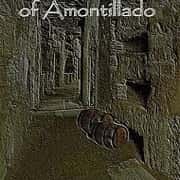
The Cask of Amontillado
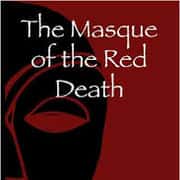
The Masque of the Red Death
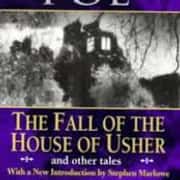
The Fall of the House of Usher
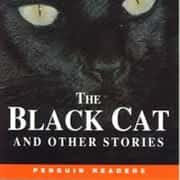
The Black Cat
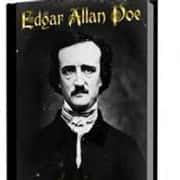
The Murders in the Rue Morgue
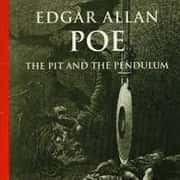
The Pit and the Pendulum
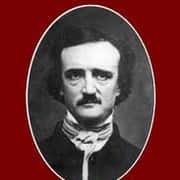
The Purloined Letter

A Descent into the Maelström

The Oval Portrait
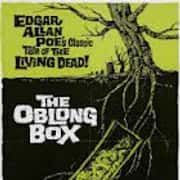
The Oblong Box

The Gold-Bug
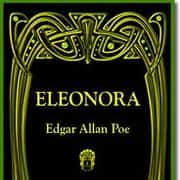
William Wilson
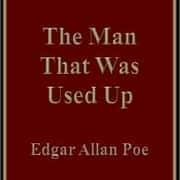
The Man That Was Used Up
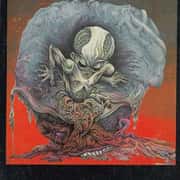
The Premature Burial
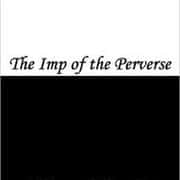
The Imp of the Perverse
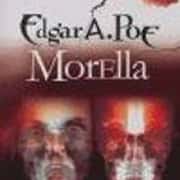
Ms. Found in a Bottle

The System of Doctor Tarr and Professor Fether

The Man of the Crowd
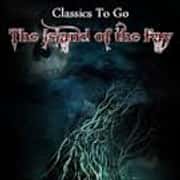
The Island of the Fay
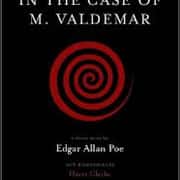
The Facts in the Case of M. Valdemar

Landor's Cottage
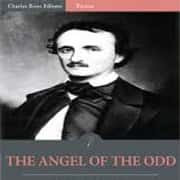
The Angel of the Odd

Mellonta Tauta
- Edgar Allan Poe
All about the spooky, thrilling worlds of Edgar Allan Poe—including The Fall of the House of Usher, now playing on Netflix.
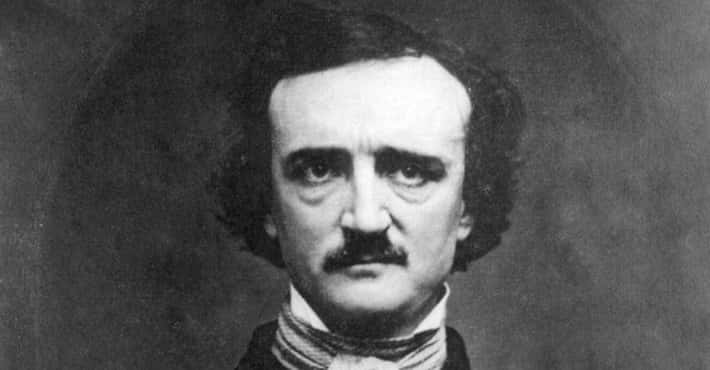

IMAGES
VIDEO
COMMENTS
9. ‘ The Premature Burial ‘. The name for a fear of being buried alive is taphephobia, and Poe wrote perhaps the definitive story about this fear, a fear which also turns up in ‘The Fall of the House of Usher’. The story taps into a nineteenth-century fear which was widespread, and prefigures the work of the psychoanalyst Sigmund Freud ...
1. “The Tell-Tale Heart”. One of his shortest stories, this is the quintessential Poe story in many ways. It concisely showcases his recurring elements of guilt, paranoia, murder, and unnamed narrators rationalizing their actions. The murdered man’s heart beating through the floorboards is one of Poe’s creepiest, most iconic images ...
8. “The Murders in the Rue Morgue”. Celebrated as the first modern detective story, Poe’s hero C. Auguste Dupin is featured in two subsequent tales, “The Mystery of Marie Roget” and ...
If you use the "print this page" link, all words and definitions are listed at the end. "The Angel of the Odd" (1844) Comedy about being drunk. "The Balloon Hoax" (1844) Newspaper story about balloon travel. "Berenice" (1835) Horror story about teeth. "The Black Cat" (1845) Horror story about a cat. "The Cask of Amontillado" (1846) A story of ...
6. “The Pit And The Pendulum” (1843) Image via Complex Original. Many of Poe's stories reveal their macabre nature in vivid, devilish detail, but "The Pit and The Pendulum" rests on the fear ...
Even in the grave all is not lost!”. 7. “Ligeia”. This 1838 story was singled out by Poe as one of his favorites, and you can easily see why. Like the earlier (and more lurid) “Berenice ...
The Tell-Tale Heart. “The Tell-Tale Heart” is one of Poe’s best-known short stories. First published in 1843, it is told by an unnamed narrator who tries to convince the reader of his sanity while describing a murder he committed. The victim was an old man with a “vulture eye” who lived with the narrator. After carefully planning the ...
The master of the macabre, Edgar Allan Poe (1809–1849) was an American writer and poet best known for his dark short fiction. Eleven of Poe’s short stories are discussed here. Initially published in various magazines in the mid-19th century, Poe’s works include timeless classics such as “The Tell-Tale Heart” (1843), “The Fall of the ...
About Edgar Allan Poe. Edgar Allan Poe was born in Boston, USA, in 1809. Poe, short story writer, editor and critic, he is best known for his macabre tales and as the progenitor of the detective story. He died in 1849, in mysterious circumstances, at… More about Edgar Allan Poe
The absolute best Edgar Allan Poe stories of all time, ranked by the community. This list has the most popular Edgar Allan Poe stories. Poe, born in Boston, Massachusetts in 1809, is one of the most famous authors of all time, known for his short stories and poems. Part of the American Romantic...